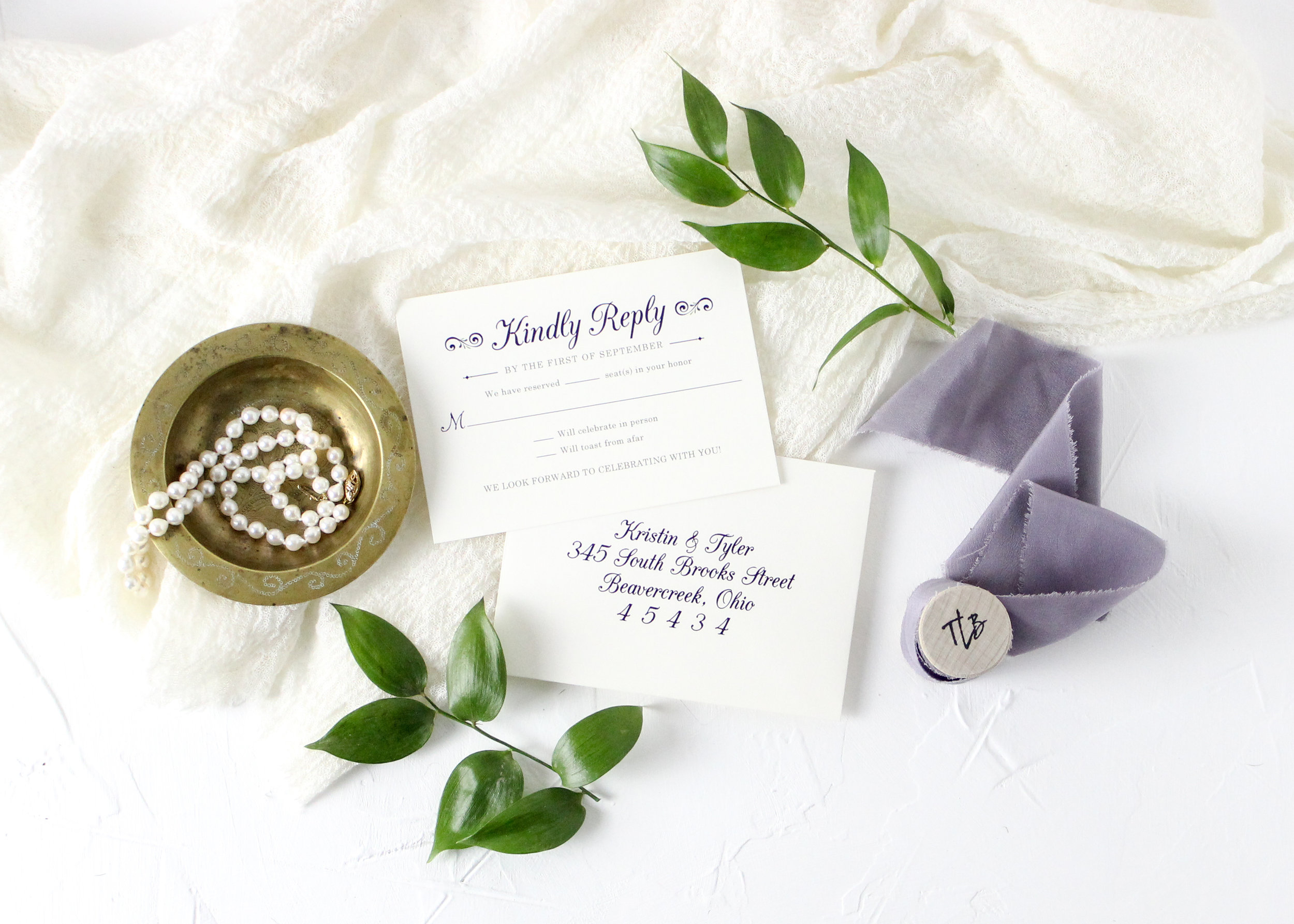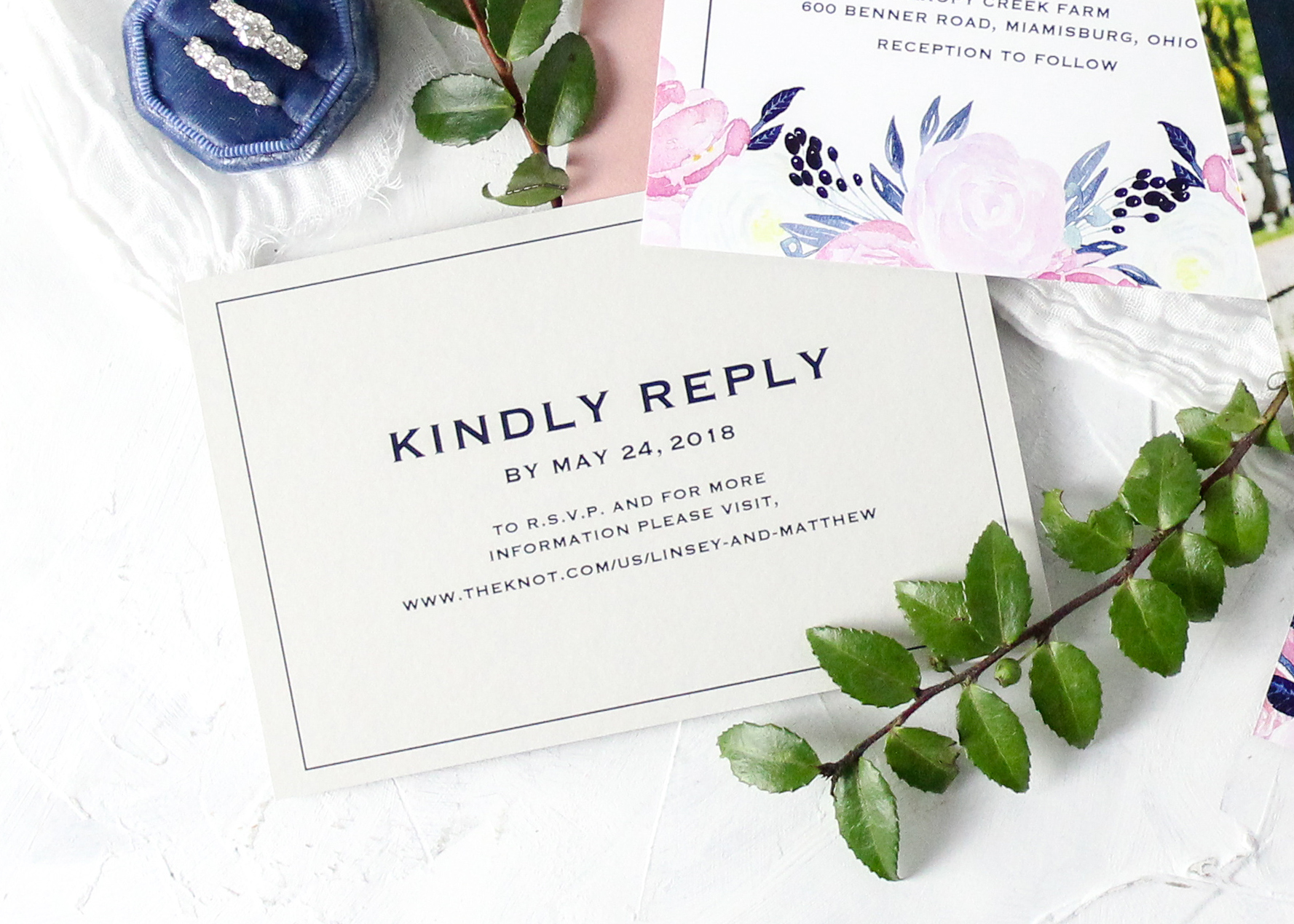When it comes time to design your wedding invitations, your reply cards are arguably one of the most crucial pieces. When deciding on your format and wording you want to deliver something that not only succeeds in serving its purpose, but also beautifully represents your taste and style. RSVPs are a great way to set the tone for your guest experience. You can choose to keep your design simple (yes/no attendance reply) or add personalized details, like fun wording or song requests.
Reply cards are typically offered in three styles: traditional envelope style, postcards or online. Depending on your budget and style, one may be a better option than the other. If you’re torn on what to decide, here are a few things to consider:
Tradtional Envelope
The envelope style is the most traditional and most popular option for the RSVP design. With this option, I can even address your envelopes to ensure consistency for your invitation suite. This option requires a reply card and envelope selection. The typical size is 4-Bar, but some couples opt for a larger A2 depending on the amount of information needed to collect. With this style, I also offer alternative printing options such as white ink, foil printing and even hand stamping for those that want to make a statement. This particular style requires the envelope be postmarked with a standard forever stamp, which we can also customize for you.
Pro-tip: plan for 4 to 6 weeks dedicated to designing and printing your invitation suite, and a little longer if your stationery is custom.
Postcard
Much like the name implies, this design is mailed as a postcard without an envelope. With the postcard style, the return address is printed on the back (addressing cost is included in the design and is an equal swap for the envelope). Standard sizing remains the same as the traditional RSVP; however, I usually recommend upsizing to the A2 so there is less chance of getting lost in the mail. This style saves a bit on postage -- only requiring a postcard stamp.
Pro-tip: If using standard reply cards or postcards, when mailing out your invitations, subtly mark your reply card with a number that coordinates with your guest spreadsheet. This will help with any confusion on the returned cards -- believe it or not some people don’t write their names on the reply card. Some couples have even used a blacklight marker so that the marking remains hidden.
Online
For the more modern couple, online RSVPs are growing in popularity. As the most budget-friendly option, this style does not require envelopes, addressing or postage. The design features a traditional look that couples love, but is delivered via your wedding website to capture online responses. Usually online replies combine with the details card, and simply states the couples website and a reply by date.
Pro-tip: Not all guests have access to online capabilities -- especially the older crowd. Often times, a better plan is to combine online with traditional reply cards to give guests options. If you decide to opt for online RSVPS, be sure to check replies and update your list frequently. Website servers are not 100% reliable, and there could be a slim chance that you lose some, if not all of your responses.
I recommend sending your invitations a two to three months before the wedding date. The reply-by date needs to be approximately one month prior. Most wedding vendors require final counts at least 2 weeks prior. A month will insure you have ample time to organize last minute details. Keep in mind, holidays and weather may impact travel time in the mail.
If you’re engaged and shopping for your perfect invitation suite, check out our portfolio featuring my designs in styled shoots, real weddings, parties and more. As always, if you don’t see a design that fits your style, shoot me an email so I can customize something just for you!





